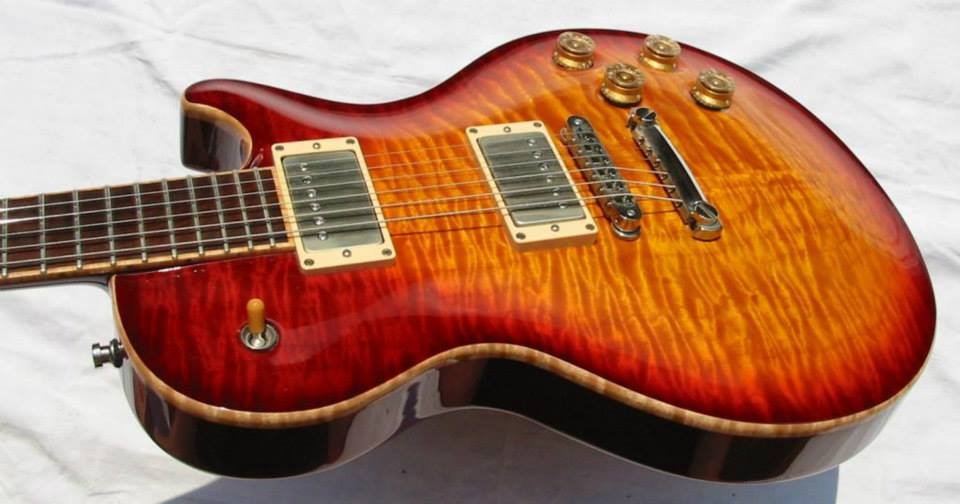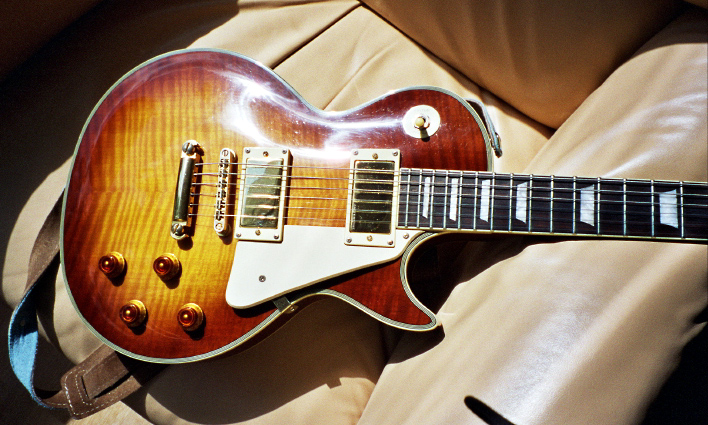My take is that "tonewood" is nothing more than a marketing term.
Atm I own two Les Paul type guitars at somewhat opposite ends of the price spectrum.
Guitar #1: Heatley Tradition.
This is like the bonanza of buzzword specs:
- Honduras mahogany body/neck.
- Brazilian rosewood fretboard. It even has flame maple binding on it.
- Wolfetone pickups, Tonepros hardware, Sperzel locking tuners, nitro finish etc.
- It's also everything a modern LP type guitar should be - more ergonomic neck joint, headstock with a volute and straight string pull.
- Made in Canada in 2006.
Built perfectly, the fretwork is so good you can get ridiculously low action on it if you want. Just a great boutique guitar. I bought it used because I had trouble finding a Gibson worth a damn here in Finland as I wanted to finally buy a high end LP type guitar.
Guitar #2: Fenix Les Paul copy
The base spec on this is actually pretty solid:
- 3 piece mahogany body. Or more like 2 piece plus a small sliver of the edge.
- Two piece solid flame maple top rather than veneer as was common on LP copies.
- Rosewood fretboard.
- 3 piece mahogany neck (scarf joint headstock, a small piece of the heel and the rest of the neck)
- Set neck. There are bolt-on versions floating around too.
- Gotoh hardware and tuners.
- Made in South Korea in I think 1990.
The stock electronics and pickups were absolutely awful though. I ripped them out and installed Mastertone active pickups and electronics in it. They were made by an Australian guy that made pretty unique active pickups. If you didn't know, you wouldn't really tell them apart from passives soundwise except they are higher output and lower noise. Nothing like what EMG makes for example.
I also replaced the nut with a bone nut and leveled the frets. So I've put in a good bit of work to make it better.
It plays really well and overall is a well built guitar where it matters - correct neck angle etc. You can see in the pic some of the higher fret inlays are slightly off center - it has some minor cosmetic defects like that.
I'd rate the upgraded Fenix as maybe 80% the guitar that the Heatley is. It doesn't sound the same, but it's really different rather than better or worse. The Heatley plays even better, looks better, feels better.
But is that all worth several thousand euros more than the obscure Fenix LP copy that I bought for peanuts? To me the Heatley is a luxury I can afford and enjoy, but objectively the Fenix is more than good enough. Having those fancy tonewoods certainly weren't the thing that makes the Heatley better to me - it's all in the work its creator Scott Heatley put in to make it so close to perfect. If that wasn't right, it would be just a pretty guitar - and I've sold a few really pretty guitars because they didn't sound that great.
Tonewood is a marketing term because there is no reason a guitar has to be made out of wood. There are plenty of man-made materials used as well as less traditional woods. The wood species typically found in guitars have been more of a question of tradition, cost, availability and ease of shaping and painting.
Another favorite guitar of mine is a Flaxwood Rautia made of injection moulded spruce fiber and resin, made right here in Finland. It's near-impervious to weather conditions, I haven't adjusted its truss rod in years. It sounds just as good as any of my traditional guitars.
That said, I don't subscribe to the Jim Lill school of "nothing but the pickup matters". All the materials matter - wood, metals etc. I've put the same pickup in a few guitars and it didn't sound identical in them.
But you don't need some fancy tonewoods to have a great sounding guitar. A lot of those revered vintage Strats, Teles and Les Pauls are pretty much a few planks of wood they chose that day that somehow ended up being better than the next planks they put together. Wood is an inconsistent material after all so there are bound to be gems and duds.




